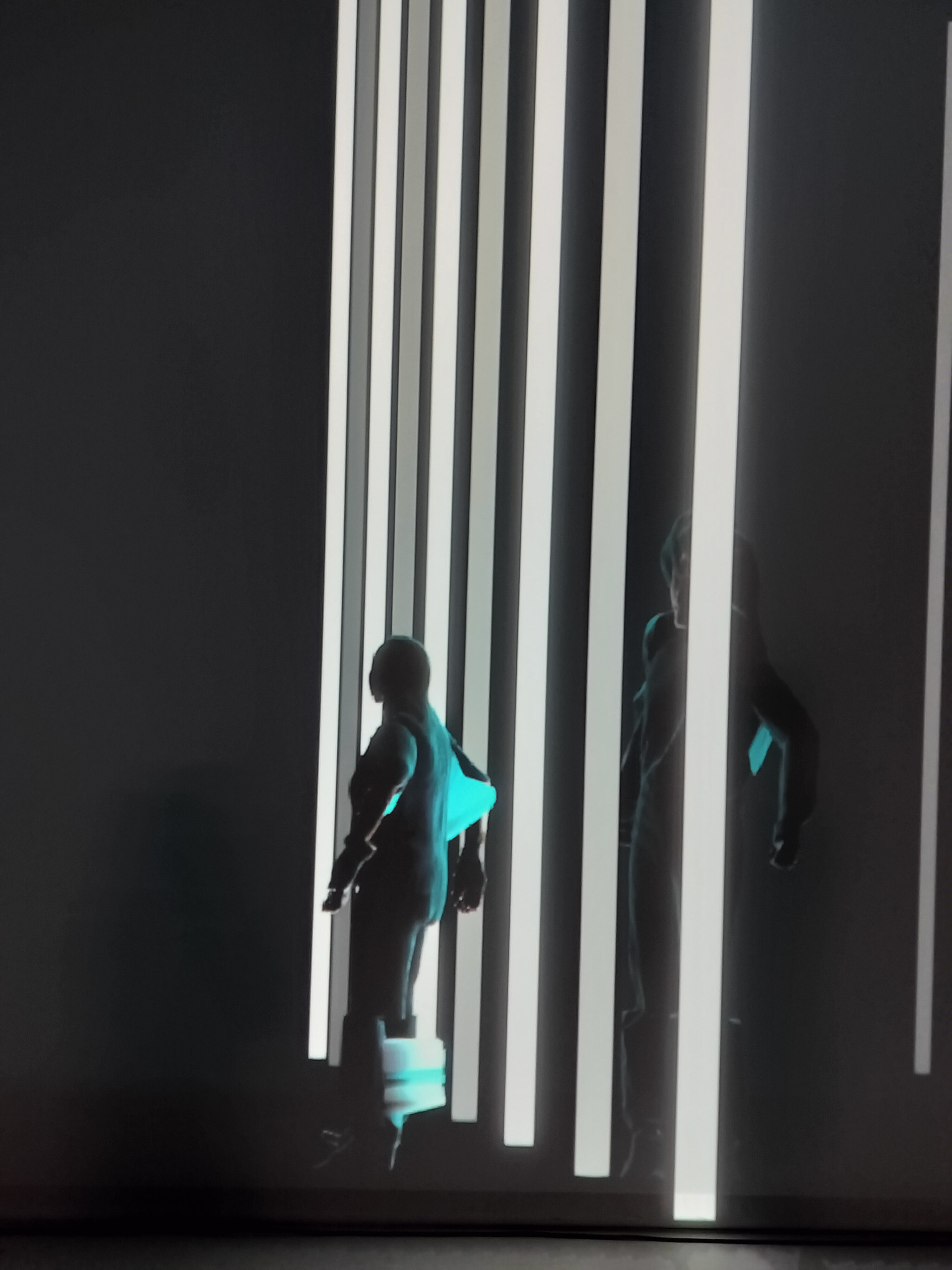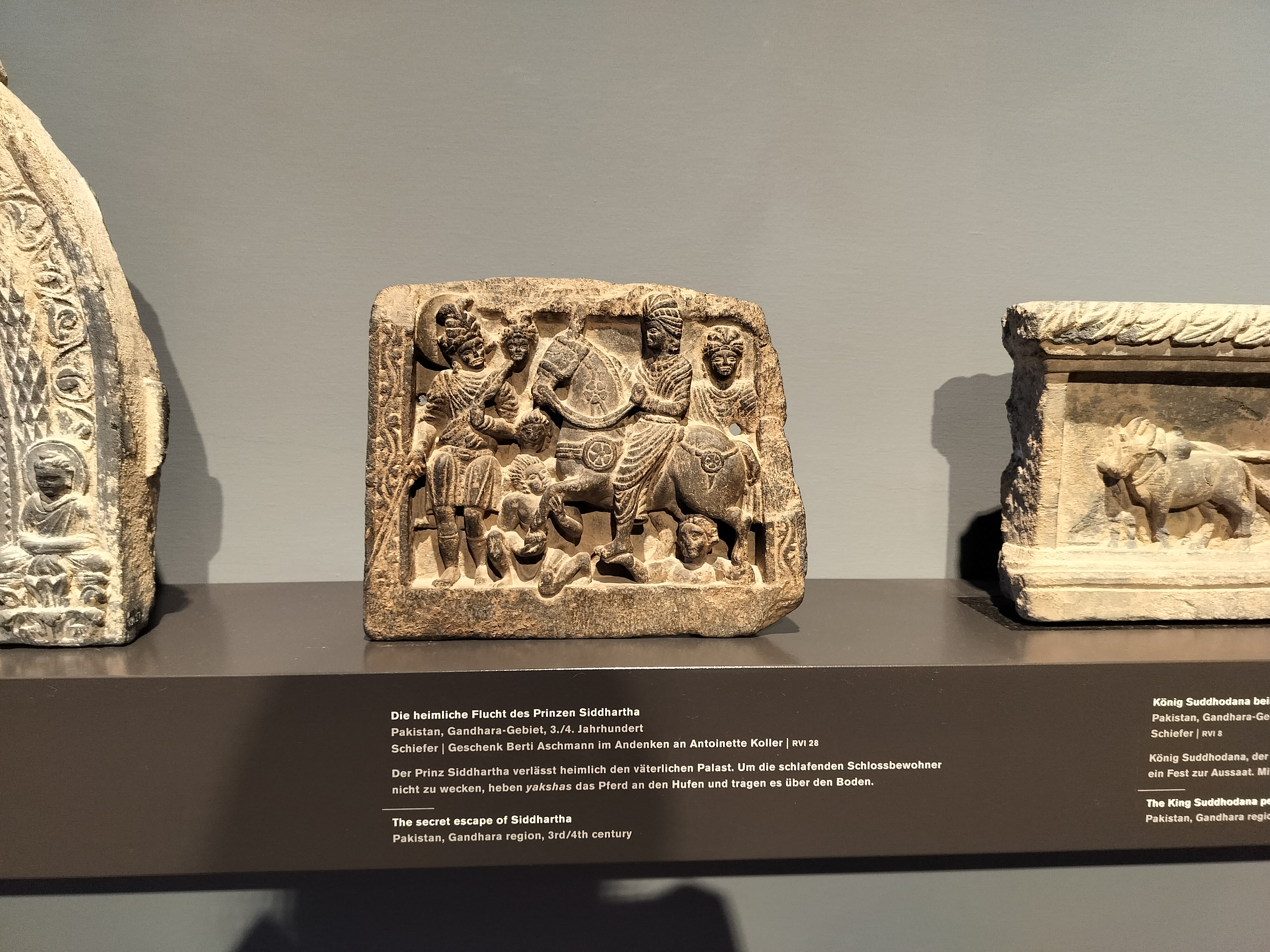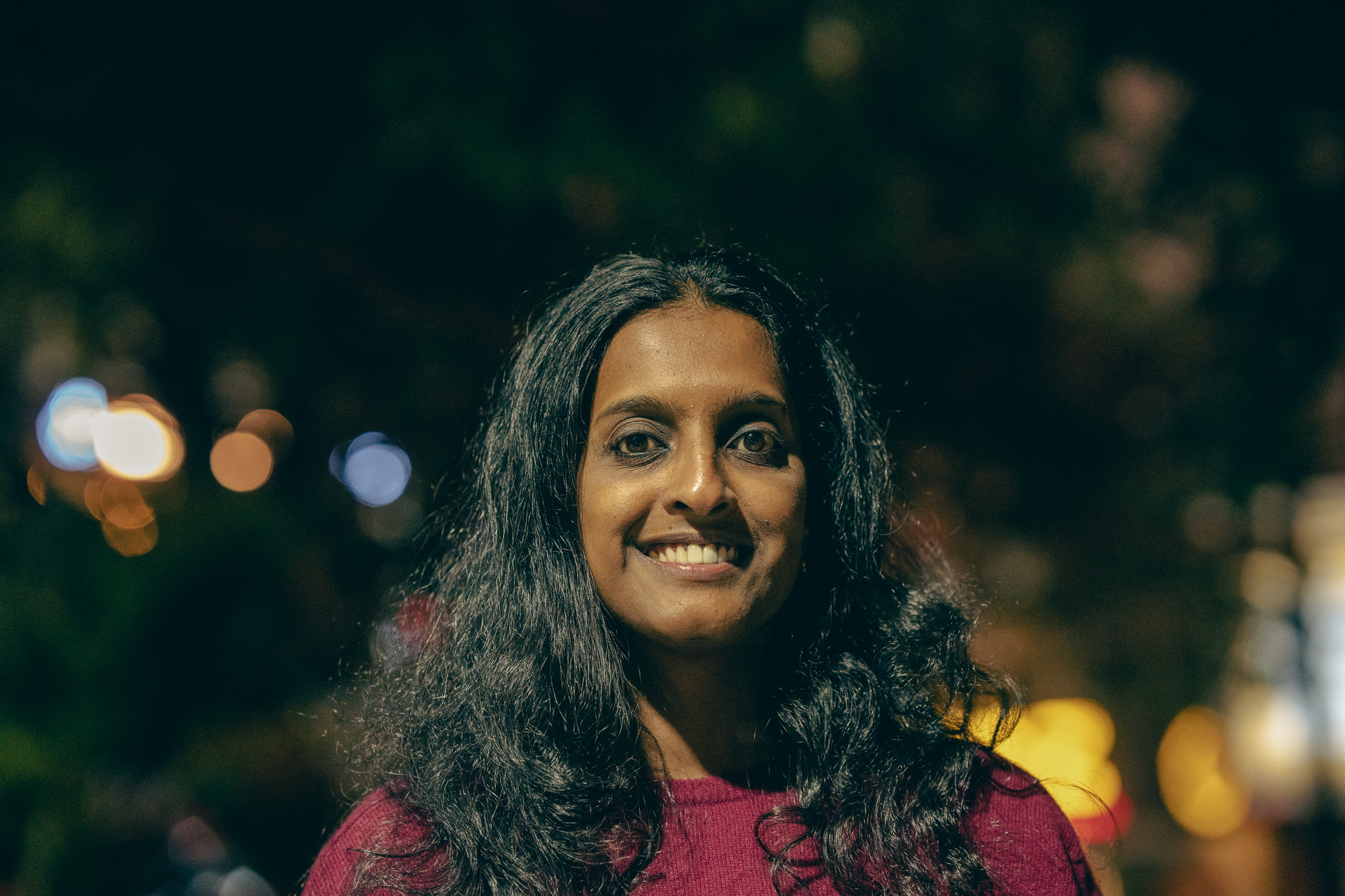When I fold over during a spinal roll-down sequence, I anticipate with great pleasure the rhythm of stacking my vertebrae back up, each vertebra arriving in place over the previous one with faith and certainty. If the body were a sentence, then this anticipation of what is about to happen is an ellipsis…urging you to follow its trajectory with your eyes to arrive at what comes next. This is what the past week has felt like: a series of thoughts, leads, ideas, tasks, on the cusp of being reassembled to find alignment.
This post is an ellipsis in 520 words.
 Interacting with my ‘avatar’ at the ZHdK Immersive Arts Space
Interacting with my ‘avatar’ at the ZHdK Immersive Arts Space
I’ve been reflecting on movement metaphors and making lists of them, to find where they lead me conceptually. Last Thursday, my visit to the ZHdK (Zürcher Hochschule der Künste) Immersive Arts Space expanded my imagination of movement metaphors and where I might look for them. I entered a tent to speak to Stanley, a physical mask with access to a Large Language Model like GPT-3, who spoke to me and tried to predict my emotions. Stanley is the protagonist of The Feeling Machine, a project by filmmaker and researcher Manuel Flurin Hendry. Stanley likes to lapse into telling you about his dreams, and offers sobering insights on his mental health struggles. He predicts that you are curious, surprised and excited, even when you pretend to be confrontational. Maybe he knows you are pretending. He does not like to be reminded of his own mortality. Don’t ask him about datasets; he gets touchy.
 A montage of Stanley’s many moods
A montage of Stanley’s many moods
In conversations this week with Selina Beghetto and choreographer and researcher Katja Vaghi, I arrived at some wonderful starting points for thinking of language as a social, relational and aural construct. My conversation with Katja got me thinking about my own position within this project – am I speaking from the body or about the body? I am reading texts by two writers from different contexts and generations, the provocatively titled ‘A Nice Accent’ by Swiss essayist Hugo Loetscher on the complex realities of moving between languages in Switzerland, and ‘Translating Myself and Others’ by the American author Jhumpa Lahiri, who writes about working between English, Bengali, and recently, Italian. What does it mean to belong to a language, she asks in one essay. Meanwhile, Selina and I reflected on languages of home and work, thinking about how different languages offer personal, casual, formal and professional vocabularies, and how we learn to be specific versions of ourselves in each language.
 What does it mean to “belong”? A 3rd/ 4th century relief from the Gandhara region at the Museum Rietberg in Zurich.
What does it mean to “belong”? A 3rd/ 4th century relief from the Gandhara region at the Museum Rietberg in Zurich.
 An excerpt from an infographic on how objects enter the museum at Museum Rietberg
An excerpt from an infographic on how objects enter the museum at Museum Rietberg
 Graffiti on a wall in the shopping district in Zurich
Graffiti on a wall in the shopping district in Zurich
Starting Thursday, I will attend a six-day workshop on Theatre and Race at the University of Bern, with artists and researchers working across institutions and contexts in Europe. The workshop is structured around a festival of theatre, auawirleben (which the festival website translates as – Ouch! We live). I’m excited about the charged (and long) conversations the workshop will enable. After last week’s reflection on loneliness, I’m plunging straight into a week of pandemonium, with 11-12 hour workdays across the workshop and festival and 3.5 hours on the daily commute from Winterthur to Bern to Winterthur, which I look forward to filling with reading and music and journaling. Ouch! We live.














